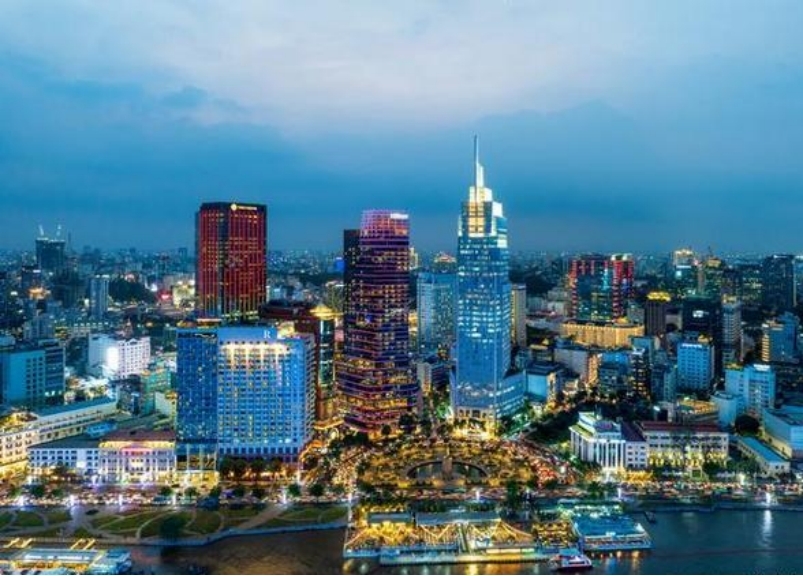
In the first quarter of 2025, the economic growth rates of the five major economies in Southeast Asia (Indonesia, Malaysia, Singapore, Thailand and Vietnam) generally slowed down. Among them, trade-oriented economies such as Malaysia, Singapore and Thailand have all lowered their growth expectations for this year. The tariff policy of the US President is expected to pose further resistance to the economy of Southeast Asia.
The National Council for Economic and Social Development of Thailand released data on May 19th showing that the country's gross domestic product (GDP) grew by 3.1% year-on-year from January to March this year, lower than the revised 3.3% in the previous quarter. Thailand's exports rose by 12.3% in this quarter, higher than 11.5% from October to December last year. However, weak government spending and private consumption dragged down the overall growth rate. The high level of household debt in Thailand has weakened the consumption capacity, especially affecting car sales. Durable goods spending declined by 1.4%, continuing the downward trend of 9.5% in the previous quarter. Among them, car purchases dropped by 2.0%, compared with a 21.2% decline in the previous quarter.
Indonesia, the largest economy in ASEAN, saw its GDP grow by 4.87% in the first quarter, down from 5.02% in the previous quarter, marking the weakest growth since the third quarter of 2021. Malaysia's GDP grew by 4.4%, Singapore's preliminary data was 3.8%, and Vietnam's was 6.93%, which were respectively lower than 4.9%, 5% and 7.55% in the fourth quarter of last year.
Nikkei Asia reported on the 19th that the economic momentum in Southeast Asia had already weakened before the new round of tariff policies was introduced. Trade-oriented economies such as Malaysia, Singapore and Thailand are now preparing to face a situation where full-year growth is lower than expected, highlighting the impact of increased global uncertainty on their exports, corporate investment decisions and the broader domestic economy.
At a time when the economy as a whole is slowing down, a series of high tariff policies will further impact exports, and this will bring huge pressure to most Southeast Asian economies that rely heavily on exports. The preliminary tax rates for some Southeast Asian countries announced by the United States in early April include: 46% for Vietnam, 36% for Thailand, 32% for Indonesia, 24% for Malaysia, and 10% for Singapore.
Another economist said that as China is the largest trading partner of many Southeast Asian countries, trade disputes among major powers may also put pressure on Southeast Asia. Gareth Leaser, a senior economist at Capital Economics Asia, wrote in a report on the outlook for Malaysia on May 16: "In the short term, companies are scrambling to ship electronic products before the United States imposes specific tariffs, which may lead to an increase in exports." However, given the slowdown in economic growth between China and the United States, we expect exports to weaken later this year.
Many Southeast Asian countries are negotiating with the United States for lower tariff rates, but these countries have also decided to lower their growth expectations. In April, Singapore lowered its full-year growth forecast from 1%-3% to 0%-2%, emphasizing that US tariffs have brought about trade uncertainties. Singapore's Deputy Prime Minister and Minister for Trade and Industry Gan Kim Yong told reporters on the 16th that trade uncertainties have led enterprises to postpone their investment plans. The slowdown in investment will also lead to a slowdown in the global and domestic economies. The Central Bank of Malaysia also said on the 16th that this year's economic growth rate will be "slightly lower" than the previous forecast of 4.5% to 5.5%. The National Council for Economic and Social Development of Thailand said on the 19th that the country's economic growth rate for the whole year of this year will be between 1.3% and 2.3%, lower than the previously predicted 2.3% to 3.3%. Economic analysts and industry insiders believe that the US tariff policy will significantly reduce Thailand's exports, which account for more than 60% of Thailand's GDP. This will lead to a weak economic performance of the country in the second quarter.
After the United States announced the imposition of tariffs, the central banks of Singapore and Thailand eased monetary policies one after another last month to support their economies amid the expected adverse situation. The Central Bank of Malaysia still kept the benchmark interest rate unchanged at 3%, but analysts believe that the pressure on the central bank of Malaysia to cut interest rates is also increasing.
Overall, factors such as the uncertainty of global trade, the US tariff policy, and weak domestic consumption have brought considerable challenges to the economic development of the five major economies in Southeast Asia. In the future, how these countries will find development opportunities and break through growth bottlenecks amid difficulties is something the world is waiting to see.

The U.S. third-quarter GDP growth rate, strikingly highlighted at 4.3%, not only surpassed market expectations but also earned the label of "the fastest in two years."
The U.S. third-quarter GDP growth rate, strikingly highligh…
Recently, US personnel intercepted a "Century" super oil ta…
According to Xinhua News Agency, the subtle changes in the …
The rapid development of artificial intelligence has brough…
In December 2025, Taiwan's political scene was shaken by a …
When Apple appears for the Nth time on the list of penaltie…